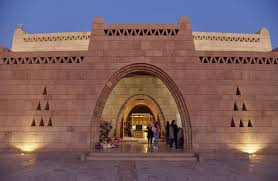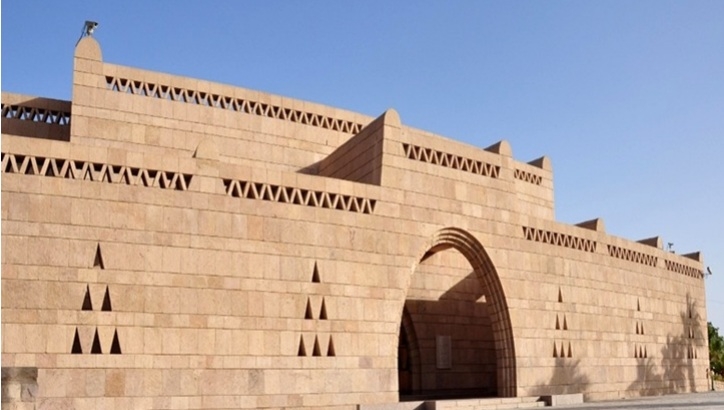The Nubian Museum, located in Aswan, Egypt, is one of the most significant cultural institutions dedicated to preserving the heritage of Nubia—a region with a history that stretches back thousands of years, spanning present-day southern Egypt and northern Sudan. Established in 1997 in cooperation with UNESCO, the museum was built to safeguard the cultural treasures, artifacts, and stories of Nubia, many of which were rescued during the construction of the Aswan High Dam.
The museum is more than a collection of artifacts. It is a living record of a unique civilization with its own language, architecture, folklore, traditions, and religious identity. Featuring exhibitions that cover prehistoric times through the Christian and Islamic periods, the Nubian Museum has become one of Egypt’s most visually stunning and academically important museums.
History and Purpose of the Nubian Museum
Origins of the Museum
In the 1960s, the construction of the Aswan High Dam created Lake Nasser, a massive reservoir that submerged a large part of ancient Nubia. To preserve the monumental heritage of the region, UNESCO launched the “Nubian Rescue Campaign,” which led to the relocation of iconic temples such as Abu Simbel, Philae, and Kalabsha.
However, thousands of artifacts, villages, and intangible traditions were also threatened. The idea of creating a museum dedicated to Nubian culture emerged as a long-term solution to preserve these elements.
Construction of the Nubian Museum began in 1989, and in 1997 the museum officially opened. Since then, it has served as a symbol of global cooperation, cultural preservation, and the historical significance of Nubia.
Mission of the Museum
The museum was created with several key missions:
-
Preserve Nubian Archaeology: Protect artifacts recovered from the flooded region.
-
Document Nubian Civilization: Tell the story of ancient Nubia, the Kingdom of Kush, and Christian Nubia.
-
Celebrate Modern Nubian Culture: Showcase traditions, crafts, music, and heritage.
-
Educate Future Generations: Provide a space for research, learning, and cultural exchange.
The museum is considered one of the finest archaeological museums in the Middle East.

Architecture and Design
The Nubian Museum is a masterpiece of modern Egyptian architecture. Designed by architect Mahmoud El-Hakim, the building integrates inspiration from the natural landscape, Nubian aesthetics, and ancient Egyptian stonework.
Integration with Nature
The museum is built over 50,000 square meters, with only a small portion dedicated to galleries and the rest filled with:
-
gardens
-
waterfalls
-
walking paths
-
rocky terraces
-
open-air archaeological displays
This design recreates the natural environment of traditional Nubian villages, which were historically surrounded by rocky desert landscapes and the waters of the Nile.
Architectural Style
The museum’s structure features several traditional Nubian design elements:
-
domes and vaults
-
Nubian arches
-
stone façades resembling ancient temples
-
earth-toned colors that blend with Aswan’s granite environment
-
water channels symbolizing the Nile
The building was awarded the Aga Khan Award for Architecture in 2001 for its cultural and environmental harmony.
Collections and Exhibits
The Nubian Museum houses over 3,000 artifacts, although only about 1,500 are displayed. The exhibits cover several periods:
-
Prehistoric Nubia
-
Pharaonic Nubia
-
Kushite and Meroitic kingdoms
-
Greco-Roman period
-
Coptic and Christian Nubia
-
Islamic Nubia
-
Modern Nubian culture
Below is a detailed breakdown of each section.
1. Prehistoric Nubia
The prehistoric section highlights early human settlements along the Nile. Artifacts include:
-
stone tools
-
pottery fragments
-
hunting weapons
-
burial items
-
rock art samples
These objects reveal that Nubia was one of the earliest centers of human development, with communities dating back over 100,000 years.
2. Pharaonic Nubia
This section reflects Nubia’s role during ancient Egyptian dynasties. For thousands of years, the Egyptians were deeply connected to Nubia because of:
-
gold mines
-
exotic goods
-
trade routes
-
military campaigns
Artifacts in this gallery include:
-
statues of pharaohs who governed Nubia
-
inscriptions detailing Egyptian expeditions
-
ceremonial objects
-
stelae commemorating victories and treaties
-
jewelry and golden ornaments
These displays illustrate how Nubia became both a trade partner and an area of Egyptian expansion.
3. The Kushite Kingdom (25th Dynasty)
One of the most remarkable chapters of Nubian history is the rise of the Kingdom of Kush, which eventually ruled Egypt during the 25th Dynasty.
The museum displays:
-
statues of Kushite pharaohs
-
pottery from Napata and Meroë
-
royal ornaments
-
depictions of gods worshiped in Kush
-
architectural fragments of temples
This period is significant because Nubian kings, such as Piye and Taharqa, became pharaohs of Egypt and revived many ancient traditions.
4. Greco-Roman Nubia
During the Greco-Roman period, Nubia remained a culturally rich region with active trade and political influence.
Exhibits include:
-
Roman-era statues from Qasr Ibrim
-
Greek inscriptions
-
pottery showing imported Mediterranean goods
-
reliefs from temples like Kalabsha and Dendur
These artifacts highlight the mix of Roman, Egyptian, and Nubian traditions.
5. Christian and Coptic Nubia
Nubia was one of the earliest regions to adopt Christianity (6th century AD). The museum preserves rare examples of Christian Nubian art and architecture.
Among the artifacts:
-
colorful frescoes from ancient Nubian churches
-
painted icons
-
Christian manuscripts
-
stone crosses
-
baptismal fonts
-
architectural elements from cathedrals
The Christian period in Nubia lasted almost 1,000 years and produced a rich artistic tradition.
6. Islamic Nubia
After the spread of Islam into Nubia, new cultural elements emerged. Exhibits include:
-
Islamic pottery
-
prayer niches (mihrabs)
-
Qur’anic inscriptions
-
traditional Islamic jewelry
-
wooden doors and architectural carvings
These artifacts reveal how Islamic culture merged with existing Nubian traditions.
7. Modern Nubian Culture
One of the museum’s most beloved sections is its tribute to modern Nubians, whose homes were flooded by Lake Nasser.
This section includes:
-
Nubian clothing
-
silver jewelry
-
traditional musical instruments
-
marriage and festival costumes
-
handmade baskets and pottery
-
models of Nubian houses
-
tools used in daily life
-
storytelling and folklore exhibits
These displays preserve the identity and traditions of Nubians who were relocated from their original homeland.
Open-Air Museum
The outdoor area of the Nubian Museum is one of its most impressive features:
-
large stone blocks
-
temple fragments
-
tombstones
-
reconstructed ancient dwellings
-
statues rescued from Lake Nasser
The open-air gallery allows visitors to experience monumental Nubian artifacts under the natural Aswan sky, much like how they originally appeared.
Educational Programs and Research
The Nubian Museum is not only a public exhibition space—it is also a center for:
-
archaeological research
-
preservation training
-
cultural workshops
-
academic conferences
-
educational programs for children
The museum collaborates with universities and archaeologists globally, continuing the UNESCO mission of cultural protection.
Cultural Significance
The Nubian Museum plays a crucial role in:
1. Preserving Nubian Identity
It protects the cultural memory of a people whose land and lifestyle were threatened by environmental changes.
2. Recognizing Nubian Contributions to World History
Nubia produced:
-
powerful kingdoms
-
skilled archers
-
beautiful art
-
advanced architecture
-
unique religious beliefs
The museum restores Nubia’s place in global heritage.
3. Promoting Tourism in Aswan
The museum is a major attraction, complementing:
-
Abu Simbel (nearby region)
4. Encouraging Multicultural Awareness
Nubia is a blend of African, Egyptian, Mediterranean, and Middle Eastern influences—a rich cultural mix celebrated in the museum.
Visiting the Nubian Museum
Location
The museum is located at the base of the desert hills in Aswan, near the Fatimid Cemetery and the Old Cataract Hotel.
Best Time to Visit
-
October to April (cooler months)
-
Sunset visits are especially breathtaking, with warm golden light over the gardens.
What Visitors Love Most=
-
authentic Nubian architecture
-
peaceful gardens and waterfalls
-
stunning lighting at night
-
unique outdoor exhibits
-
rich storytelling of the Nubian people
The museum often hosts cultural festivals, art exhibitions, and performances.
Archaeological Importance
The museum helps scholars understand:
-
early human settlements
-
the relationship between Nubia and ancient Egypt
-
the Napatan and Meroitic civilizations
-
religious transitions from paganism to Christianity and Islam
-
the impact of displacement caused by the High Dam
It remains a major resource for researchers of African and Middle Eastern history.
SEO-Optimized Keywords for the Article
Use these keywords throughout your site:
-
Nubian Museum Aswan
-
Museum of Nubia
-
Nubian culture Egypt
-
Nubian Museum history
-
Aswan tourist attractions
-
Nubian civilization artifacts
-
UNESCO Nubian heritage
-
Nubian archaeology
-
Modern Nubian culture
-
Nubian Rescue Campaign

